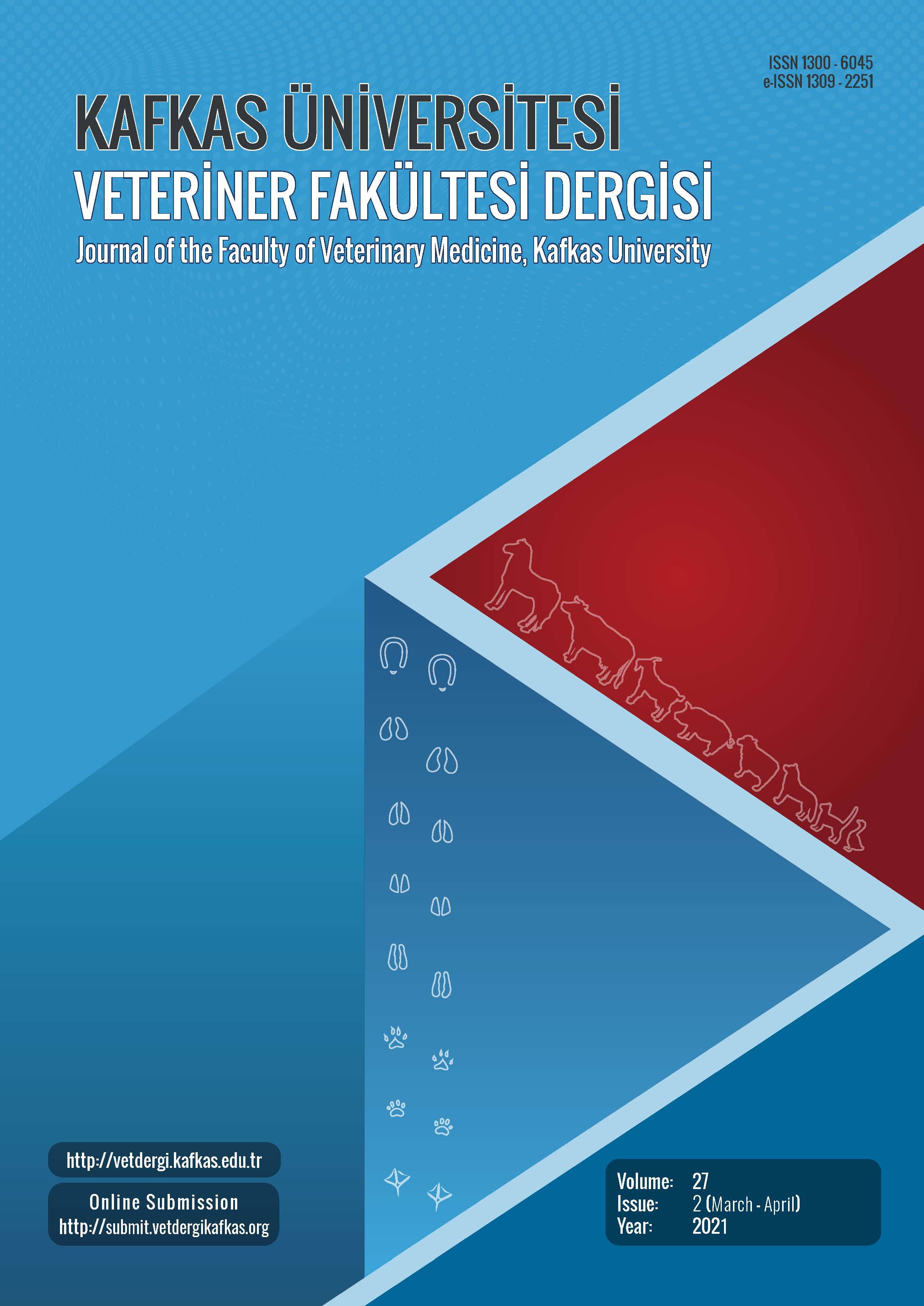
This journal is licensed under a Creative Commons Attribution-NonCommercial 4.0 International License
Kafkas Üniversitesi Veteriner Fakültesi Dergisi
Early View
Morphological and Molecular Changes in Renal Tissue Following Experimental Unilateral Ureteral Obstruction in Rat Kidneys
1Hatay Mustafa Kemal University, Faculty of Veterinary Medicine, Department of Pathology, TR-31300 Hatay - TÜRKİYE2Hatay Mustafa Kemal University, Faculty of Veterinary Medicine, Department of Genetics, TR-31300 Hatay - TÜRKİYE
3Hatay Mustafa Kemal University, Faculty of Veterinary Medicine, Department of Surgery, TR-31300 Hatay - TÜRKİYE
4Hatay Mustafa Kemal University, Faculty of Veterinary Medicine, Department of Statistics, TR-31300 Hatay - TÜRKİYE
5Hatay Mustafa Kemal University, Faculty of Veterinary Medicine, Department of Physiology, TR-31300 Hatay - TÜRKİYE DOI : 10.9775/kvfd.2024.32776 This study was designed to investigate the pathological, molecular, and biochemical changes subjected to experimental unilateral ureteral obstruction (UUO) during the acute phase, specifically within a seven-day period. The kidney"s reaction to obstructions, such as unilateral ureteral obstruction (UUO), is highly complex and involves a dynamic interplay of various molecular processes. A total of 72 Wistar Albino rats were divided into nine groups, each consisting of eight rats. The left kidneys of the first seven groups underwent UUO surgery, with one group being necropsied daily. All left kidneys were examined using histopathological, immunohistochemical, biochemical, and molecular methods. On the first day of unilateral ureteral obstruction (UUO), significant pathological and biochemical changes were observed in the kidneys. These included the formation of cystic dilated tubules, a decrease in cyclooxygenase-2 (COX-2) gene expression, and a reduction in glutathione peroxidase (GSH-Px) levels. By the second day, hyperemia, increased tumor necrosis factor-alpha (TNFα) gene expression, and elevated malondialdehyde (MDA) levels were evident. In the third day; there was mild interstitial mononuclear cell infiltration roteinaceous filtrate in tubules, heightened transforming growth factor beta 1 (TGF-β1) gene and protein expression, and increased angiotensin II (ANG-II) and interleukin-10 (IL-10) protein expression. By day five, kidneys subjected to UUO exhibited hydropic degeneration, TNF-α protein expression, and anti-RELA antibody expression. On the sixth day, significant increase in IL-10 gene expression was noted. In conclusion; these results provide valuable insights for future studies on UUO pathogenesis and research into potential treatment modalities. Keywords : Angiotensin II, Interleukin-10, Oxidative stress, Transforming growth factor beta 1, Unilateral ureteral obstruction










